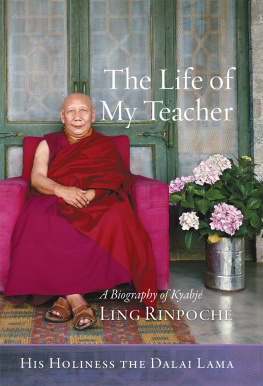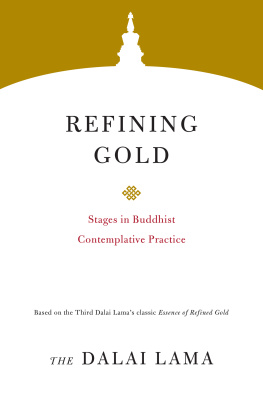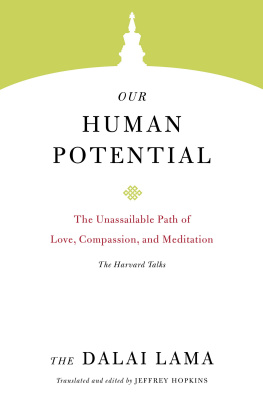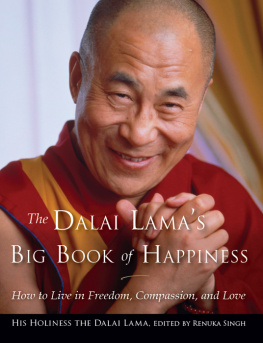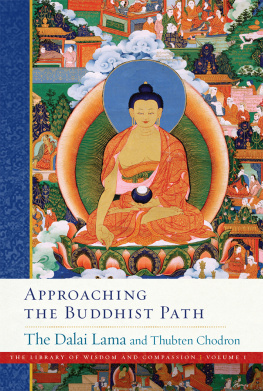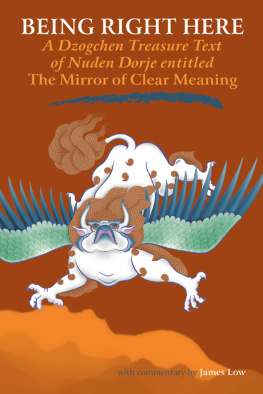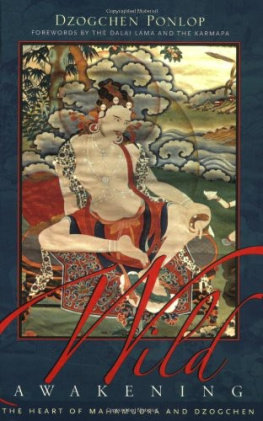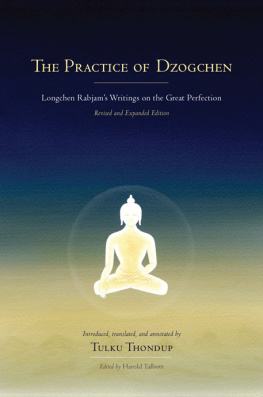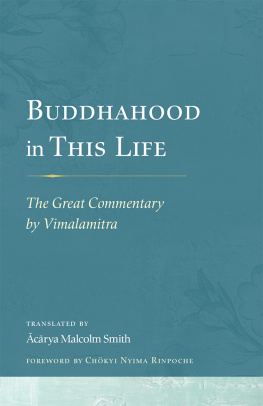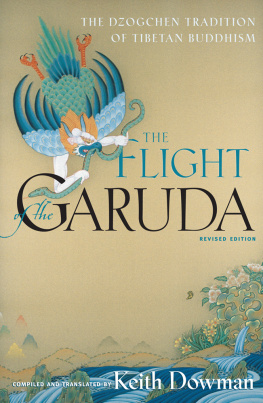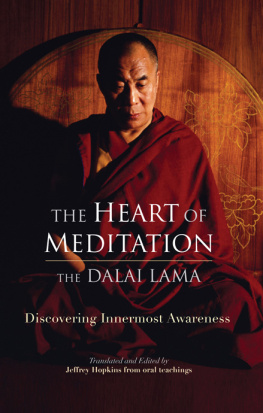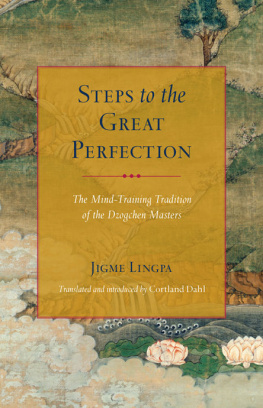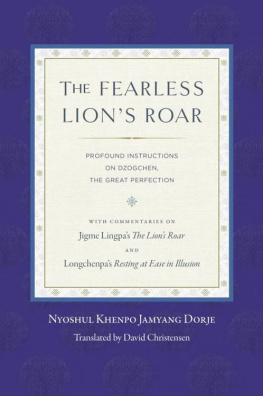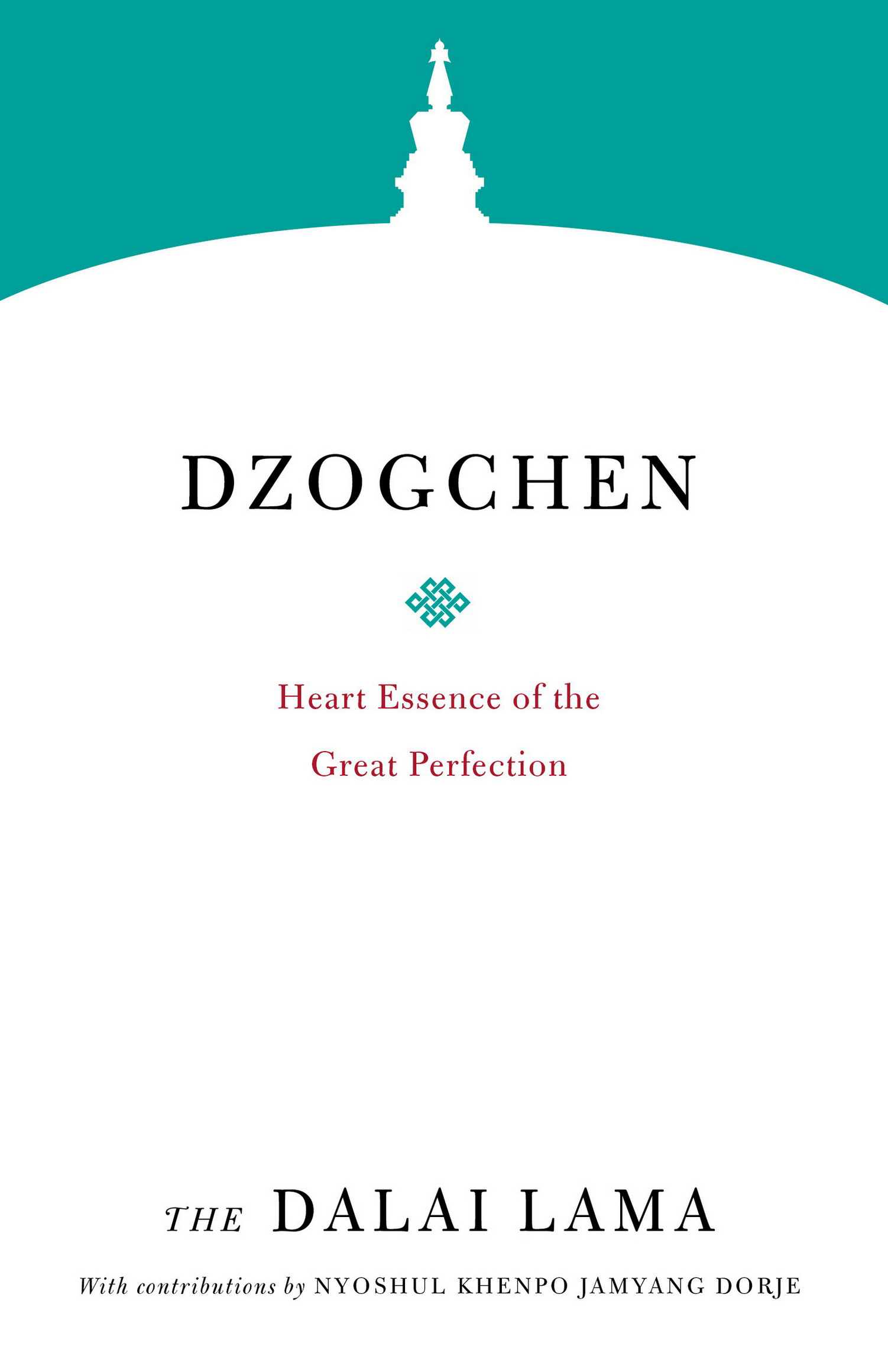A CKNOWLEDGMENTS

First and foremost, our gratitude goes to His Holiness the Dalai Lama for his generosity in giving these unique teachings. Next we should like to thank Sogyal Rinpoche for having invited His Holiness to give the teachings in 1982, 1984, and 1989, and for his continuing inspiration. Thanks go to Geshe Thupten Jinpa for his translation and guidance, and to Richard Barron (Chkyi Nyima) for his translation and his priceless assistance with the whole of this endeavor.
Our deep gratitude must be noted equally to Alak Zenkar Rinpoche and Tulku Thondup Rinpoche for their spontaneous kindness and expert clarification of a great number of points. For their many vital suggestions and improvements to the text, our thanks are due to E. Gene Smith and Steven D. Goodman. We would like to take this opportunity too to thank Dzogchen Rinpoche and the monks of the Dzogchen monastery in Kollegal in India for having made Tibetan transcripts of a number of teachings.
Those who played a key role in the organizing of the teachings presented in this book, and whom we should like to thank here, include, in chronological order: Tsering Dorjee, Kaln Tashi Wangdi, Phuntsog Wangyal, Kaln Tempa Tsering, Kazur Tenzin Geyche, Kazur Lodi Gyari Rinpoche, Rinchen Dharlo, and Kazur Tenzin N. Tethong. For his help in facilitating the teachings in Paris, we would like to thank Dagpo Rinpoche. We would like to acknowledge the Finnish Tibet Committee for their kind permission to include His Holinesss teaching in Helsinki, and thank Antti Tihverinen, and the Director of the Mannerheim Museum.
A number of members of Rigpa around the world took part in the preparation of this book, directly or indirectly, notably Susie Godfrey, Sue Morrison, Jeannie McSloy, Janine Philippou, Adam Pearcey, Dominique Side, Andreas Schulz, Michael Pope, Susan Oliver, Alex Leith, Graham Price, and Sebastien Reggiany. Many others played their part in organizing His Holinesss teachings in Paris, London, and San Jose, and especially Claire Michaud, Babette Bridault, Philip Philippou, Sandra Pawula, and Mary Ellen Kelleher. Our thanks go to Jeffrey Cox and Sidney Piburn at Snow Lion, and to Martin Schofield for his invaluable advice.
The publication of this book has been made possible through the generosity of Kris Yao and Pei-Lan Shen.
As for any inaccuracies or errors which have crept into this work, the editor reserves the right to claim them entirely as his own.
Our design in editing this book for publication has been to carry out the wishes of His Holiness the Dalai Lama, to make these teachings available, and to help them be of benefit to as many as possible.
Patrick Gaffney
A PPENDIX
A Gift to the World

A teaching given by Nyoshul Khenpo Jamyang Dorje on October 8, 1989, in San Jose.
Nyoshul Khenpo was born in 1932 in the Derge region of Kham. He studied under twenty-five great masters, among whom was Shedrup Tenp Nyima, the reincarnation of Nyoshul Lungtok. From him, he received the teachings of Longchen Nyingtik and particularly the Great Oral Lineage of Pith Instructions (Mengak Nyengy Chenmo) of Dzogpachenpo. This became Khenpos special lineage, a lineage which passed back to the Primordial Buddha, in an unbroken line, through such extraordinary masters as Khenpo Ngakchung, Nyoshul Lungtok, Patrul Rinpoche, Jikm Lingpa, Longchenpa, Vimalamitra, and Padmasambhava. Khenpo passed these teachings on to a few close disciples, as well as to a number of the greatest masters and lineage holders of his time. He wrote a definitive History of the Dzogchen Nyingtik, containing the biographies of the lineage masters, and a remarkable collection of poetic songs of realization. Nyoshul Khenpo was such a consummate master of Dzogchen, and such an authority on the teachings of Longchenpa, that his disciples regarded him as Longchenpa in the flesh. He was the teacher of many of the younger generation of lamas, as well as a number of western Buddhist teachers. He passed away in France in August 1999. No one who met him can ever forget his extraordinary presence or the spirit in which he taught, which embodied so perfectly the fathomless ease and vastness of Dzogpachenpo.
Nyoshul Khenpo was one of Sogyal Rinpoches most beloved masters and was present and taught at many Rigpa retreats and gatherings in the period 198496. One of these occasions was during His Holiness the Dalai Lamas teachings at San Jose, where he gave this teaching in the evening of October 8, after His Holinesss session. The translator was Richard Barron (Chkyi Nyima).
A G IFT TO THE W ORLD
How fortunate we are, all of us, to have had this opportunity to gather in the presence of His Holiness the Dalai Lama and receive this profound teaching of Dzogpachenpo, the Great Perfection. His Holiness is no ordinary teacher: he is universally regarded and accepted as an emanation of Avalokitevara, the bodhisattva who embodies the compassion of all the buddhas. To receive such a profound teaching from such an authentic and realized teacher makes this a very holy occasion.
At this point I would also like to express my appreciation to Sogyal Rinpoche, who himself, it might be noted, is recognized as the incarnation of one of the close students of Padmasambhava, the eighth-century master called Nanam Dorje Dudjom. I am particularly impressed by the energy that Sogyal Rinpoche has displayed in his activities in seeking to bring the Dharma to the West, and to establish and spread the teachings of the Buddha here, so that they may once again shine like the sun, this time in the lands of the west. I would like to express my appreciation and thanks to him for all the preparations that went into this gathering, and for the work he has done in establishing the connections with all of you that brought you to this event.
When we refer to the Buddhadharma, we are speaking of a tradition that stretches back two and a half thousand years, to the time when Buddha kyamuni appeared in India and first taught the teachings that we now know as Buddhism. It is this eventthe appearance of Buddha kyamuni in Indiawhich is compared in the teachings to the rising of the sun. In the same way that the sun dispels darkness in the world, the appearance of the Buddha dispels the darkness that lies in the hearts of all beings.
Once this sun had risen, once these teachings had appeared in the world, there developed a tradition where, generation after generation, people followed these teachings, realized the point of them and became models of conduct and practice for others. Thousands upon thousands of individuals attained the fruit of these practices according to the various levels and vehicles of Buddhadharma: the stage of arhat through the practice of the Fundamental Vehicle; the stages of the great bodhisattvas through Mahyna practice; and the stage of siddha or realized saint through the Vajrayna or tantric path. Through the work of these practitioners and scholars, one generation after anotherthousands upon thousands of people, practicing, studying, and realizing the teachingsthe tradition of Buddhism came to spread throughout the whole of the east, influencing to some extent virtually every culture in Asia.


